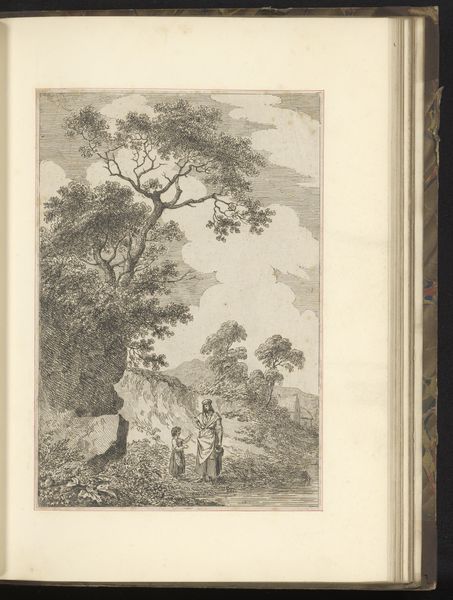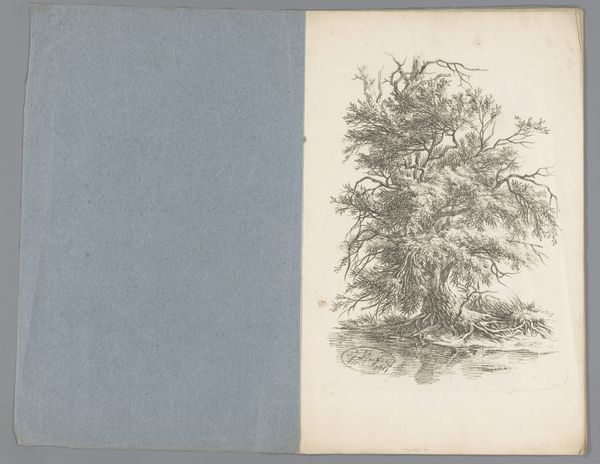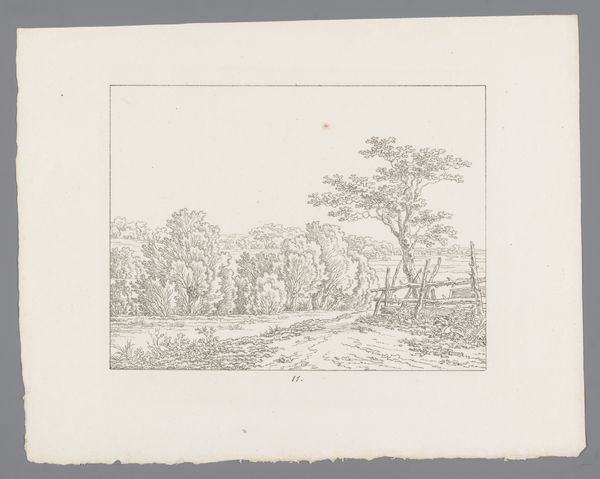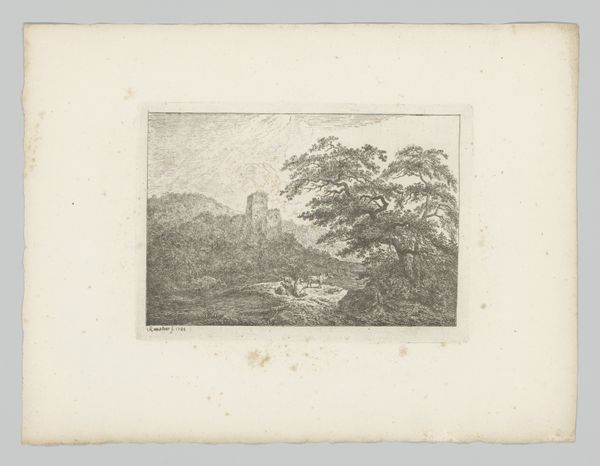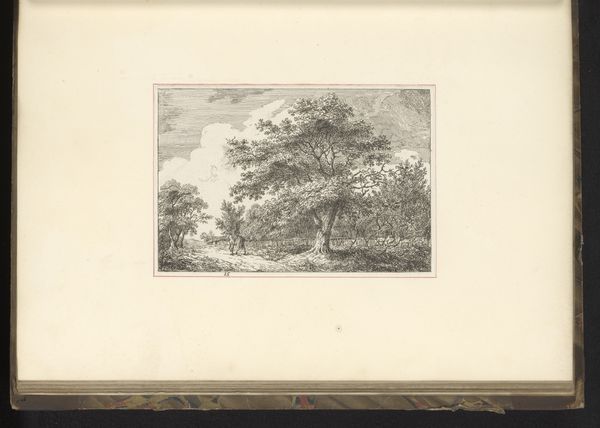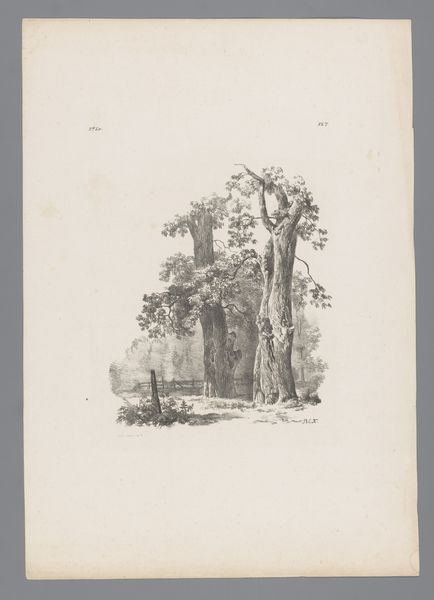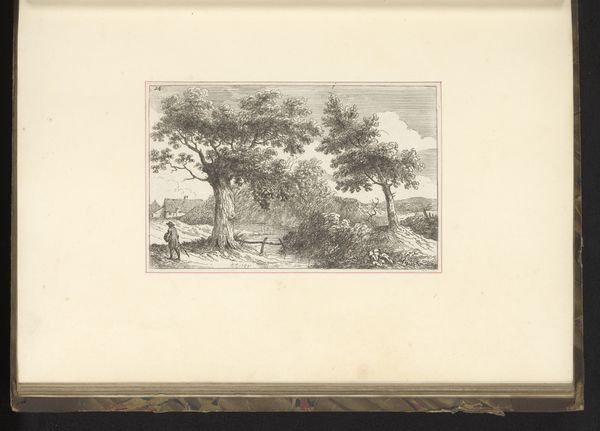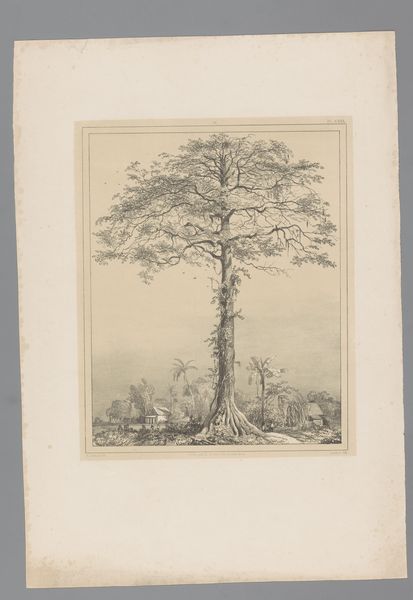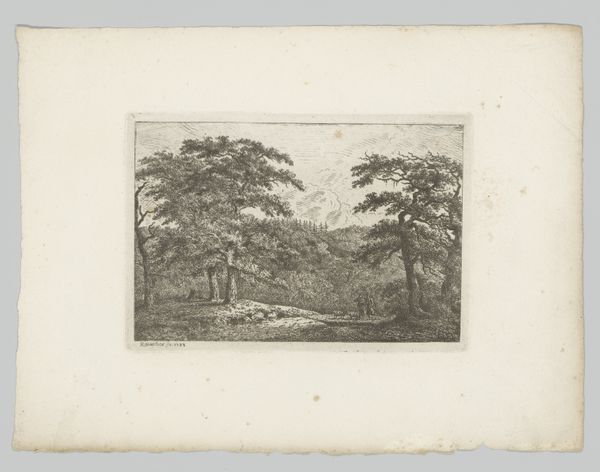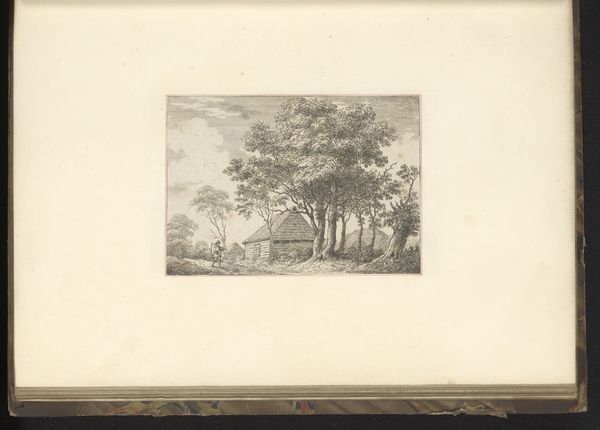
drawing, paper, ink
#
drawing
#
landscape
#
paper
#
ink
#
realism
Dimensions: height 120 mm, width 85 mm
Copyright: Rijks Museum: Open Domain
Editor: So this drawing, "Fotoreproductie van een schildering, voorstellende witte abelen," or "Photographic reproduction of a painting, depicting white poplars," is made with ink on paper and dates to before 1876. I’m struck by how the artist captures this grove of trees using very few shades. What do you see in this work? Curator: These are silver poplars or white poplars. Look at how the ink work traces the subtle gradations of light on their leaves. For me, trees have long functioned as symbols of resilience, nature’s capacity to thrive despite adversity, representing continuity between generations and the ties between humans and the landscape. Does the winding and bending of the taller trunks hold any visual or symbolic meaning for you? Editor: Definitely! It's almost as though they're dancing or embracing, an effect achieved by that mirroring composition. What do you mean by ties to the landscape? Curator: These trees appear in Dutch art throughout time to denote home and the familiar world; an attempt to bring the pastoral safety of the past into an uncertain future. But I wonder, how might this photographic reproduction affect the reading of the original painted symbol? Editor: That's fascinating. It almost makes it a symbol of a symbol, adding another layer of removal from nature itself. Curator: Precisely! I find myself contemplating the cultural memory embedded in these seemingly simple landscape elements. Editor: This makes me consider the role of reproduction in shaping our understanding of nature through art. Curator: Yes, the image itself becomes a memory. Thanks, this has really highlighted the artwork's historical weight!
Comments
No comments
Be the first to comment and join the conversation on the ultimate creative platform.
